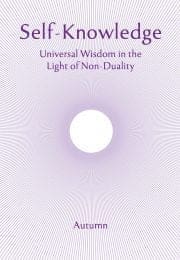An Outline of Patanjali’s Yoga
YOGA in its wider meaning stands for the age-old methods whereby we, who suffer while we believe ourselves to be confined within a body and narrow individuality, can come to recognise our innate freedom and infinitude. The traditional view is that the highest Yoga is a divine gift revealed by the Lord and through His appointed messengers.
Within this wider concept, Yoga can mean any of the individual methods which lead to the goal of Self-Realisation, or even the key characteristic of a particular method, e.g. ‘Perfect equanimity is called Yoga.’ (Bhagavad Gita 2:48).
The various Yogas trace their inspiration back through the Upanishads to the Lord of Yoga, and thus there is no fundamental inconsistency between them. All accept the need for a preliminary mental discipline, and all take the final purpose to be the realisation of the Universal Self. The differences are explained by the fact that they cater for devotees of varying temperaments and capacities, and may be based on an advanced metaphysic like the Advaita Vedanta of Shri Shankara or a more elementary position such as the Sankhya philosophy of the Sage Kapila.
Patanjali did not claim to have originated the system often referred to as Raja Yoga set out in his Yoga Sutras between 300 and 200 BC. He attributes its revelation to the Lord in the early days of history, and there are certainly references to its main features in the Upanishads, e.g., in Maitri Upanishad (6:18).
His work begins with a definition: ‘Yoga is the stilling of the fluctuations of the mind’, which is reminiscent of the verse in the Katha Upanishad (6:14): ‘ When all desires dwelling in the heart are destroyed, then the mortal becomes immortal and attains Brahman even here.’ Desires here include not only consciously held impulses and thoughts but also the subconscious contents (sanskaras) created by past thoughts and experiences lying deep in the mind.
The Yoga Sutras are in four short books on samadhi (the nature of identity-consciousness), sadhana (the methods of attaining samadhi), vibhuti (the powers which come through Yoga) and kaivalya (liberation of the individual soul). There is a classical commentary known as the Yoga Bhashya (by Shri Vyasa) on which Vachaspati Mishra wrote a gloss entitled Tattva-vaisharadi
as well as a sub-commentary attributed to Shri Shankara. Later commentaries are the Rajamarttanda of Bhoja, and the Yogavarttika and Yoga Sara Sangraha of Vijnanabhikshu. All these are available in English translation, the Yoga Bhashya and the Yoga Sara Sangraha probably being the most useful for the general reader.
Patanjali adopted the metaphysics of the ancient Sankhya philosophy with only slight modification and without pushing his thought to the limits later reached by Shri Shankara, whose exposition of Advaita marks the most advanced and complete interpretation of the wisdom of the Upanishads. According to the Sankhya view, everything in the universe is composed of the ‘intermingling’ of two principles, Spirit (Purusha) and Matter (Prakriti). There are countless Purushas who are all changeless, pure, eternal Spirit and witness (sakshi) of activity, although through their association with Prakriti they have to come to feel as if bound in the web of the pulsating world as suffering agents. (There is no satisfactory account of how one Purusha can be distinguished from another, especially as all differences are said to be in Prakriti, and reason is heavily on the side of the Advaita, which maintains that there is only one Self in all beings.)
Subscribe or enrol for free guest access to read all of this article and Self-Knowledge online.
Already subscribed or enrolled? Log in:


